Soilless gardening is no longer just a futuristic concept—it’s a reality that’s transforming the way we grow food and plants. Whether you’re a gardening newbie or a green thumb enthusiast, you’ve probably come across terms like hydroponics, aeroponics, and aquaponics. But what do they actually mean? And how do you figure out which one might work best for you?
In this blog, we’ll break down these three innovative gardening methods. You’ll learn what makes each system unique, how they work, and the pros and cons of choosing one over the others. Whether you’re looking to save water, grow food in a small space, or dive into eco-friendly farming, we’ve got you covered.
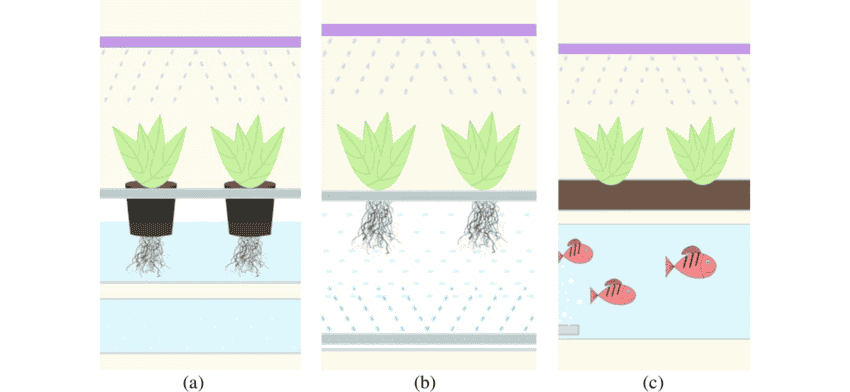
By the end of this post, you’ll have a clear understanding of hydroponics, aeroponics, and aquaponics—and feel confident in picking the perfect system for your gardening goals. Let’s dig in!
What Are Hydroponics, Aeroponics, and Aquaponics?
When it comes to growing plants without soil, there’s no one-size-fits-all approach. Hydroponics, aeroponics, and aquaponics each have their own unique methods that make them stand out. Let’s break them down and see what makes each one special.
Hydroponics
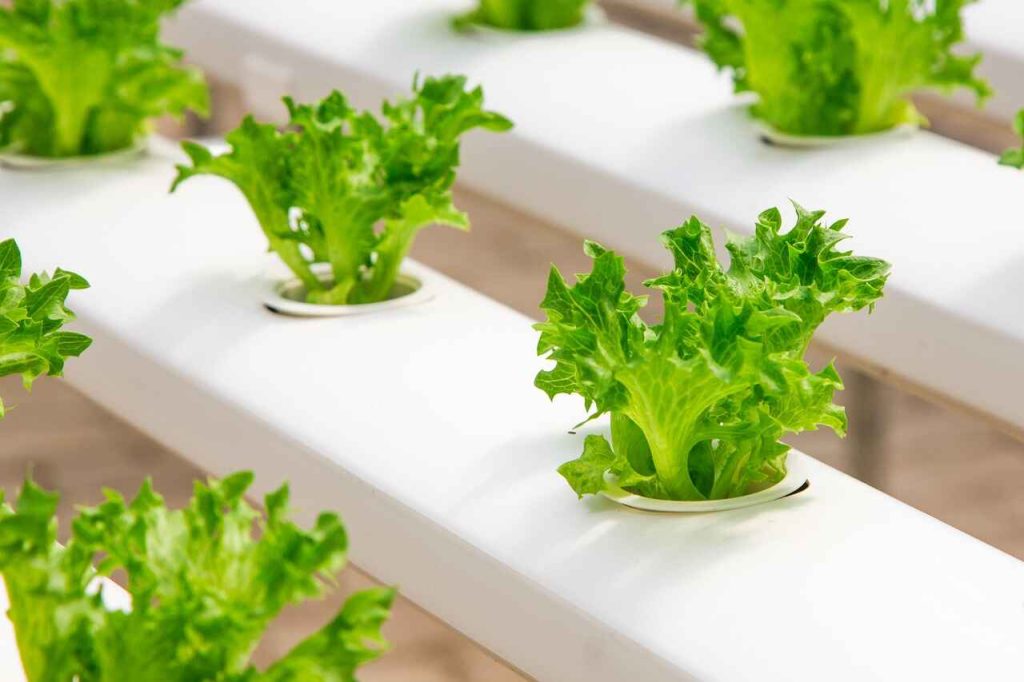
Imagine plants growing directly in water, sipping on a perfectly mixed “plant smoothie” of nutrients. That’s hydroponics! Instead of soil, plants get all the goodness they need from water infused with nutrients. It’s super popular for being easy to set up and manage. Whether you’re growing leafy greens in your kitchen or running a high-tech farm, hydroponics is versatile and efficient.
Aeroponics
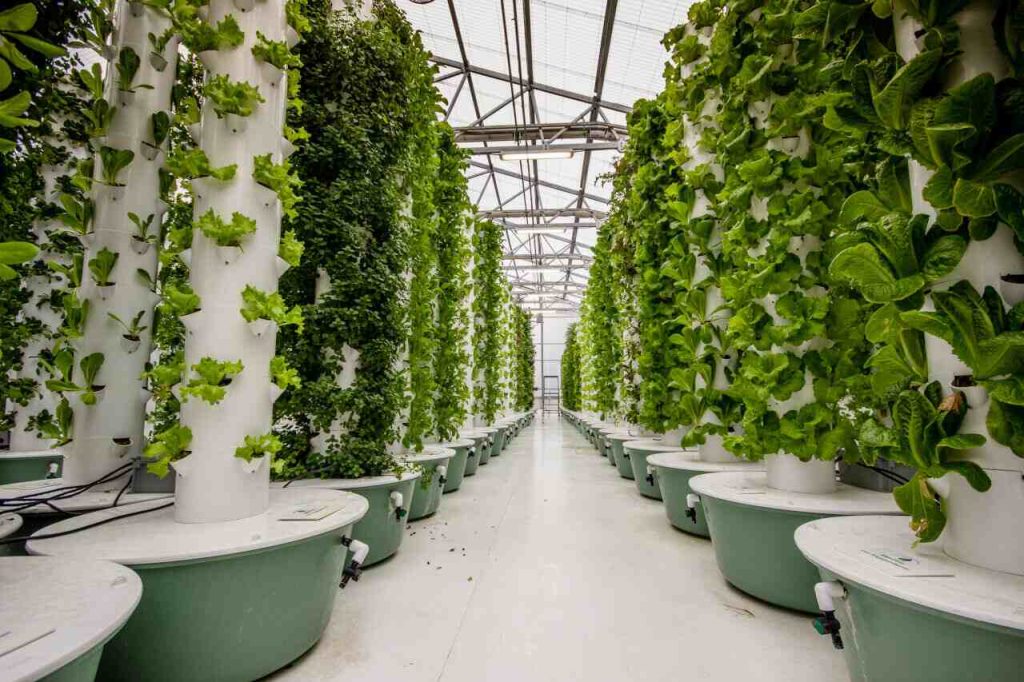
Now picture this: plants with their roots hanging in the air, getting misted with nutrients like they’re at a fancy spa. That’s aeroponics! It’s all about maximum oxygen exposure and precise nutrient delivery. This system is loved for being water-efficient and perfect for high-tech growers, but it needs a little more care to keep things running smoothly.
Aquaponics
Here’s where gardening meets fish farming. In aquaponics, plants and fish work together in a beautiful cycle. Fish waste becomes a natural fertilizer for the plants, while the plants help clean the water for the fish. It’s a win-win for both! Plus, it’s an eco-friendly option that can provide you with fresh produce and fish at the same time.
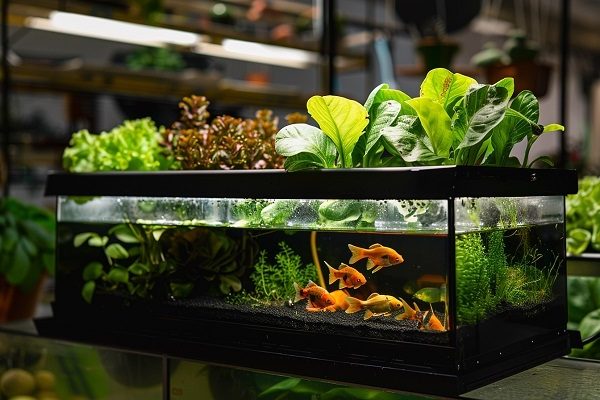
Each of these methods offers a unique way to grow plants, whether you’re short on space, water, or want to try something sustainable. Now that you know the basics, let’s dive deeper into how they compare!
Key Differences Between the Systems
Now that you know what each system is all about, let’s compare them side by side. Each one has its own strengths and quirks, so understanding their differences will help you choose the right fit for your gardening goals. Let’s break it down into some key factors:
Water Usage
- Hydroponics: This system uses water, but it’s still more water-efficient than traditional soil gardening. You’ll need to monitor the water levels and nutrients, but overall, it’s a great way to conserve water.
- Aeroponics: If you’re looking for something super water-efficient, aeroponics is the way to go. Since the roots are suspended in the air and misted with water, it uses even less water than hydroponics.
- Aquaponics: It may seem like aquaponics uses a lot of water since it involves both plants and fish, but the great thing is that the water is constantly recirculated. The fish and plants help keep the water in balance, making it a sustainable option.
Nutrient Source
- Hydroponics: You provide nutrients directly to the plants in the form of a liquid solution. It’s like giving them a custom-made nutrient cocktail to help them grow.
- Aeroponics: Similar to hydroponics, but instead of a liquid solution, nutrients are delivered as a fine mist. The mist is more efficient at providing nutrients and oxygen to the roots.
- Aquaponics: In aquaponics, the nutrients come from the fish! Fish waste provides the nutrients needed for the plants, creating a natural cycle. No extra fertilizers needed—nature does the work for you.
System Maintenance
- Hydroponics: Hydroponics is relatively easy to maintain. You’ll need to keep an eye on the water’s pH and nutrient levels, but it’s straightforward.
- Aeroponics: Maintenance can be a bit trickier with aeroponics. The misting system needs to be cleaned regularly to prevent clogs, and you’ll want to monitor the humidity levels to make sure the plants’ roots don’t dry out.
- Aquaponics: Aquaponics systems can be more complex since you’re balancing both plant and fish care. You’ll need to make sure the fish stay healthy, monitor water quality, and sometimes adjust the nutrient levels. But if you’re up for it, it’s a great sustainable option.
Scalability
- Hydroponics: Whether you’re growing a few herbs on your windowsill or running a full-scale farm, hydroponics is highly scalable. It can grow with you as your gardening skills (and space) expand.
- Aeroponics: This system is more suited for smaller setups or high-efficiency growing. While it can be scaled up, it tends to be more technical and best for those with experience.
- Aquaponics: Aquaponics systems are great for larger-scale projects, especially if you want to grow both plants and fish. You’ll need more space, but the results are impressive—fresh produce and fish all from one system.
Each system has its own strengths when it comes to water use, nutrients, maintenance, and scalability. Now that you know how they differ, let’s dive into the pros and cons of each!
Pros and Cons of Each System
Now that we’ve broken down the differences, let’s take a closer look at the good and the not-so-good of each system. Every gardening method has its perks and challenges, so let’s explore what makes each one shine—and where they might fall short.
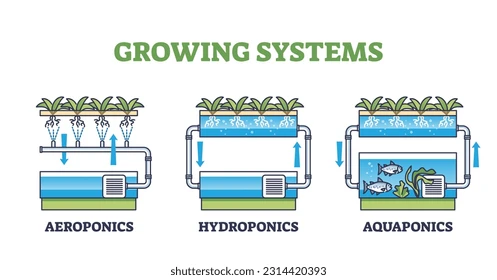
Hydroponics
Pros:
- Easy to Set Up: Hydroponics is relatively simple to get started with, especially for beginners. You don’t need a ton of technical knowledge to build a basic system.
- Efficient Water Use: Hydroponics is much more water-efficient than traditional gardening. Since water is recirculated, you’ll save a lot compared to soil-based gardening.
- Versatile: You can grow a wide variety of plants, from leafy greens to herbs to strawberries. It’s adaptable to both small and large spaces.
Cons:
- Relies on Artificial Nutrients: You’ll need to buy or create nutrient solutions, which can get expensive over time.
- Power Dependent: Since hydroponic systems often rely on pumps, lights, and other equipment, they can be impacted by power outages.
- Needs Regular Monitoring: You’ll need to keep a close eye on the water pH and nutrient levels to ensure your plants thrive.
Aeroponics
Pros:
- Water-Efficient: Aeroponics uses very little water compared to other systems. It’s great for areas where water conservation is a priority.
- Maximized Oxygen Exposure: The plants’ roots get plenty of oxygen, which helps them grow faster and healthier.
- Ideal for High-Tech Growing: If you enjoy using cutting-edge technology, aeroponics offers an exciting and innovative way to grow plants.
Cons:
- Higher Initial Cost: Setting up an aeroponic system can be expensive due to the specialized equipment needed for misting and air circulation.
- Maintenance Can Be Tricky: Keeping the misting system clean and free from clogs requires regular attention, and you’ll need to ensure that the humidity and misting levels are just right.
- Less Forgiving: If the system fails (e.g., a pump stops working), the plants can dry out very quickly, so it requires a bit more care.
Aquaponics
Pros:
- Sustainable: Aquaponics is a fantastic eco-friendly option. It’s a closed-loop system that requires no chemical fertilizers, and you’re recycling water between the plants and the fish.
- Dual Harvest: Not only do you get fresh veggies and herbs, but you also get fish—talk about a bonus!
- Less Maintenance for Plants: The fish naturally fertilize the plants, so you don’t need to worry about adding synthetic nutrients.
Cons:
- Complex Setup: Aquaponics systems are more complicated to set up. You need to balance both plant and fish care, which can be challenging for beginners.
- Requires More Space: Since you’re dealing with fish and plants, the system needs more room. This might not be ideal for those with limited space.
- Fish Health Care: You’ll need to monitor the fish closely to make sure they stay healthy, which adds another layer of responsibility.
Each system has its own set of benefits and challenges, but the good news is that there’s no one-size-fits-all answer. Whether you’re looking for something simple, water-efficient, or totally sustainable, there’s a system that can meet your needs. Let’s take a look at which one might be the best fit for you!
Which System is Right for You?
Now that you know all about hydroponics, aeroponics, and aquaponics, it’s time to figure out which system suits your needs the best. Each one has its own advantages, so it really depends on what you’re looking for in a gardening system. Let’s break it down based on your goals.
For Beginners
If you’re just getting started with soilless gardening, hydroponics might be the best choice. It’s easy to set up and manage, and you can grow a variety of plants. You won’t need a lot of experience to make it work, and there are plenty of beginner-friendly kits available.
For Small Spaces
If you don’t have a lot of space but want to grow plants efficiently, aeroponics could be a perfect fit. The compact nature of this system makes it ideal for smaller setups, and its water efficiency is a big plus for tight spaces. However, you’ll need to stay on top of maintenance and ensure everything stays running smoothly.
For Sustainability Lovers
If you’re passionate about sustainability and want a truly eco-friendly option, aquaponics is the way to go. Not only will you be growing plants, but you’ll also be raising fish. This system works well if you have enough space and want to create a balanced, self-sustaining ecosystem.
For Those with a Budget
If cost is a factor, hydroponics might be the most affordable option to get started. While you do need to invest in some equipment, it’s generally less expensive than aeroponics or aquaponics, especially if you’re starting small.
For Tech Enthusiasts
If you’re into high-tech systems and enjoy tinkering with gadgets, aeroponics could be an exciting challenge. It’s a bit more complex but offers the chance to experiment with cutting-edge growing techniques.
For Those Wanting Dual Harvest
If you dream of growing both plants and fish, aquaponics gives you the best of both worlds. It’s ideal for people who have the space and are looking for a more self-sufficient growing method.
Choosing the right system depends on your personal goals, space, budget, and level of experience. By thinking about what you want from your garden, you’ll be able to pick the perfect system to get started. No matter which one you choose, the exciting world of soilless gardening is waiting for you!
Conclusion
So there you have it—three exciting, innovative ways to grow plants without soil! Whether you choose hydroponics, aeroponics, or aquaponics, each system offers a unique set of benefits, and the right one for you depends on your goals, space, and experience level.
Hydroponics is perfect if you’re looking for an easy-to-manage system that’s great for beginners. Aeroponics offers high efficiency with less water and is ideal for tech enthusiasts who love a challenge. Meanwhile, aquaponics is the ultimate sustainable solution if you’re ready to balance both plant and fish care in a truly self-sustaining system.
The world of soilless gardening is full of possibilities, and the best part is that it’s accessible to everyone—from beginners to seasoned gardeners. The key is to start small, learn as you go, and enjoy the process. No matter which system you choose, you’ll be growing fresh, healthy plants in no time!
So, which system are you excited to try? Start your journey today, and watch your plants thrive in a whole new way!
